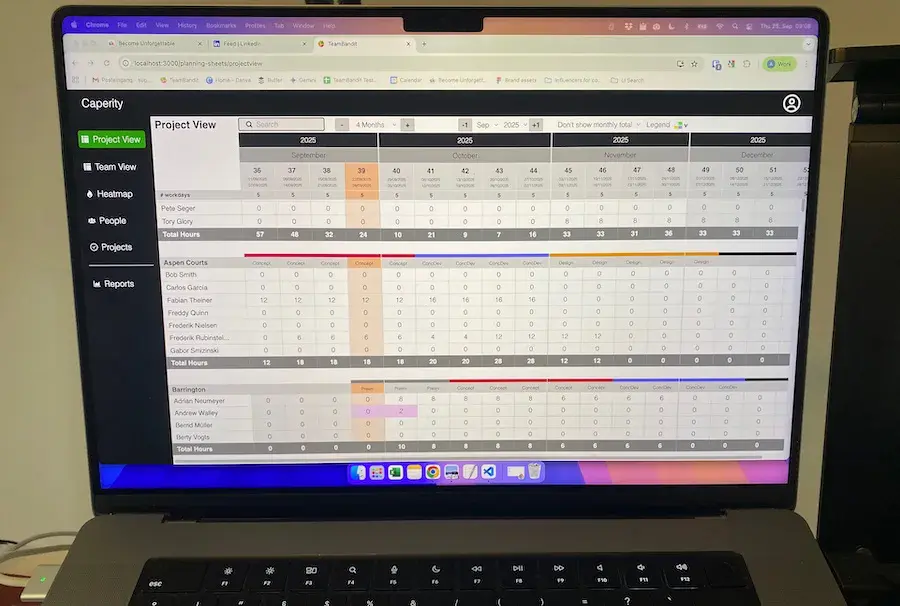“I never know if I’m doing it right or wrong.”
I hear this a lot from people in my project management coaching program.
Leading projects isn’t something you learn from a textbook.
You learn through experience. That’s how you become a better project leader.
But if you’re still looking for suggestions on how to improve?
My advice:
Just avoid these bad habits commonly seen among project managers.
These are severe mistakes. You won’t feel the consequences right away, but soon a smoothly running project can turn into a nerve-wracking, money-draining monster.
In this article, I’ll talk about these common bad habits of project managers, and I’ll share practical strategies on how you can avoid them.
Note: What you read here isn’t theory. I’ve seen these mistakes firsthand in my career as a project manager. And I’ll be honest—I’ve fallen into a few of these traps myself from time to time.
So, here are five key bad habits of project managers:
The first bad habit:
Accepting information without confirming its accuracy
Most of us have fallen into the trap of accepting a piece of information as truth, only to later find out that it was incorrect, and then having to deal with the consequences.
I once led a large project that involved connecting several of the client’s systems. One vendor was supposed to deliver the magic interface that would make the systems talk to each other.
When I was invited to lead the project, management assured me that mentioned software interface was already available on the market and fully compatible with our systems.
Everyone seemed so convincing.
Questioning the existence of the interface would have been like disputing the curvature of the earth.
So I didn’t do any further investigation.
I didn’t go to the software company’s website to find the product.
I didn’t ask the vendor: “Do you have clients already using your interface?”
Big mistake.
Three months later, the ugly truth emerged: the interface solution wasn’t ready. The software was still in the development stage. In fact, they were waiting for us to buy a $50k license so that they could fund the development. Pretty shady technique.
So, my project fell apart, and we had to reschedule everything from scratch.
Back then, I learned an important lesson: never to trust critical information without doing my own research and seeing proof that the feedback I received was really accurate.
If you take key information or assumptions at face value and use them to make important decisions or as the foundation for your schedule or cost estimates, you could run into huge problems later if the information is incorrect.
Thus, never blindly accept any information you receive.
Be skeptical.
Do your own research and verify that it’s correct.
Better safe than sorry!
Leaving the team to figure it out alone
Many project managers neglect the “leadership” responsibility that comes with their role.
Based on my observation, this shows particularly in one area:
Project managers fail to actively shape collaboration and communication in a project. They leave it up to the team to decide how and when to meet and share information with each other.
They don’t create a communication plan, outlining when the various sub teams are going to meet to discuss ongoing work and look into issues.
They don’t ask their team members for feedback: “How is the collaboration with other colleagues going? Are you getting the input you need?”
They do not occasionally drop into project meetings to check whether the teams are doing okay or if they need more leadership and direction.
That’s a terrible neglect of leadership responsibilities, especially nowadays where virtual collaboration is the norm and people talk even less with each other than they should.
The thing is:
If you don’t actively shape communication and collaboration for your team, and if you don’t ensure that everyone attends the scheduled meetings, communication will suffer – in a big way.
Key information won’t reach the right people on time, causing delays.
You will waste resources on double work because people didn’t coordinate with each other.
The quality of deliverables will be low because feedback hasn’t been gathered regularly.
All because of poor communication.
Avoid this mistake by defining a good communication plan and collaboration framework for your project. It doesn’t need to be set in stone. Start with an initial communication plan and adjust it as needed, based on feedback from project contributors.
Here’s a useful analogy: Think of a building’s plumbing system as the communication plan and collaboration framework for a project. In this scenario, water symbolizes the flow of communication within the team. You’re like Super Mario (the project manager), tasked with creating the most efficient pipe layout. Additionally, you need to regularly check for leaks and ensure nothing is blocking the pipes. This way, you help ensure that the team collaborates effectively and tasks are completed on schedule. Go Mario!
Staying on the sidelines of technical discussions
We like to stay in our comfort zone —the field in which we’ve been trained.
We’re reluctant to learn about other areas because we fear embarrassing ourselves as non-expert.
“I’m an engineer, I don’t know anything about finance.”
This strategy works well when you’re in a specialist role, where you are expected to innovate within a specific domain.
But the role of a project manager is different:
Our main job is to lead and coordinate, and our projects often involve a wide range of disciplines like IT, Finance or Purchasing. In order to effectively steer the project in the right direction, we must be able to participate in discussions. To do so, we need to have at least a basic understanding of the various fields involved.
I often see that project managers intentionally avoid participating in technical discussions with their SMEs (subject matter experts), because they don’t see this as part of their role.
This might work for a while—as long as there is no disagreement among the SMEs.
But if subject matter experts (SMEs) can’t find common ground, this can delay progress. And suddenly, you find yourself missing the next milestones.
I believe that project managers should actively participate in technical discussions. They need to understand the nuances of the different fields as they relate to their projects and be able to contribute on a high level.
This skill is common among all great managers.
You should be able to guide decisions in other areas, regardless of whether you are an expert or not.
Tip: Read my other article How to talk to experts without feeling stupid
Becoming the bottleneck in communication
As project managers, we are the central hub where all important information about a project comes together.
This includes updates on tasks, new problems, and decisions that have been made.
We are literally bombarded with new information all the time. And it’s easy to feel overwhelmed when you’re ready to call it a day and you’ve still got dozens of unread messages piling up in your inbox.
What do you do in such a case?
You decide.
Personally, I always feel more at ease when I check my emails after hours or even over the weekend, if we are in a critical phase.
The thing is:
If we don’t establish an efficient routine for sorting through our mail and separating important information from unimportant information, we quickly become the bottleneck of the entire team.
Then we easily put our team in a tough spot because critical information doesn’t get to the right people on time.
And in projects, agility is everything.
We all know how a small delay in one task can ripple through the entire schedule.
Sure, it’s no fun to sift through emails at ten o’clock at night when you are in a critical phase.
It’s no fun to organize ad-hoc meetings to inform your team about an important change.
But if we want to do a good job and stay within schedule, we need to put in the extra effort.
Not reacting to problems quickly
I live close to an ambulance station.
Every couple of minutes, vehicles rush out to save lives.
It’s fascinating to see how other drivers react when they spot an ambulance in their rearview mirror and hear the deafening siren.
Do they make way for the rescue vehicle to pass through?
No, many drivers freeze up, petrified, blocking the road.
Panic mode!!!
Freezing is one of our default responses in crisis situations.
It’s the right response if we don’t want to be spotted by hungry lion.
In all other cases, taking action is better than doing nothing.
Time and again, issues pop up in projects. Conceptual problems, technical glitches, delivery issues, impacts from other projects requiring replanning …
Sometimes, the problems are so nasty that we’d rather hide under the table.
“I just want to crawl under a desk and not react to it!”
These moments feel like the whole world is falling apart.
Then we often distract ourselves with all sorts of unproductive activities.
Responding to totally unimportant messages.
Cleaning our desk.
Watering the flowers.
At least, we don’t have to deal with reality!
But the issue might still be simmering.
And the longer we wait, the bigger the chaos in the end. The chances of remaining on schedule diminish. You might need to pull a rabbit out of your hat to get your project back on track.
So, act immediately when you become aware of a problem.
Just observe your behavior and improve
My goal was to show you how your own behavior can get in the way of project success and potentially lead to project failure, or at least, leave the client unhappy. The good news: if you keep the mistakes I’ve discussed in mind and follow the principles from this article, your chances of delivering an outstanding project will go up dramatically. Always critically assess your behavior and do what is best for the project, not what’s most convenient for you.
Best wishes
Adrian
Author
-
Hi, I’m Adrian, a Senior Project Manager and the Creator of Tactical Project Manager, where I teach a pragmatic approach to project management. Led large-scale IT and business projects for over 10 years. My goal is to enable you to lead any project with confidence.
View all posts

